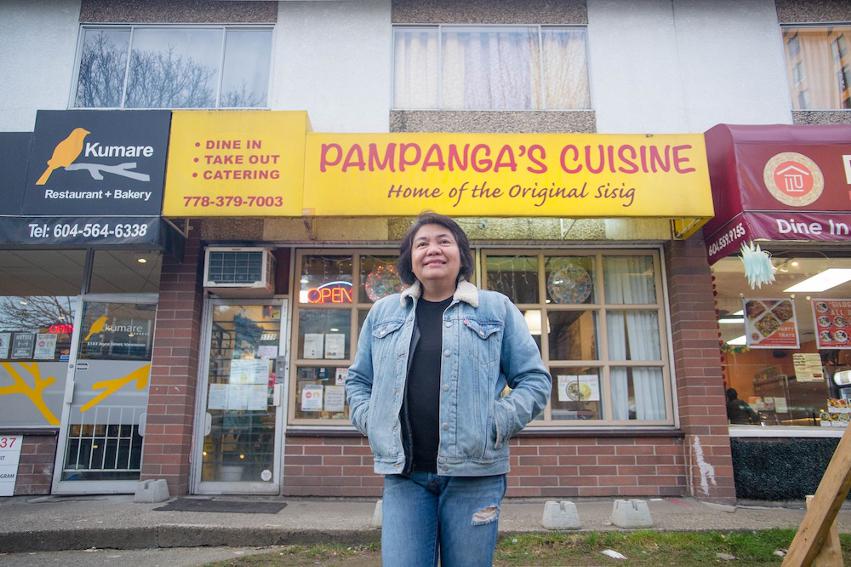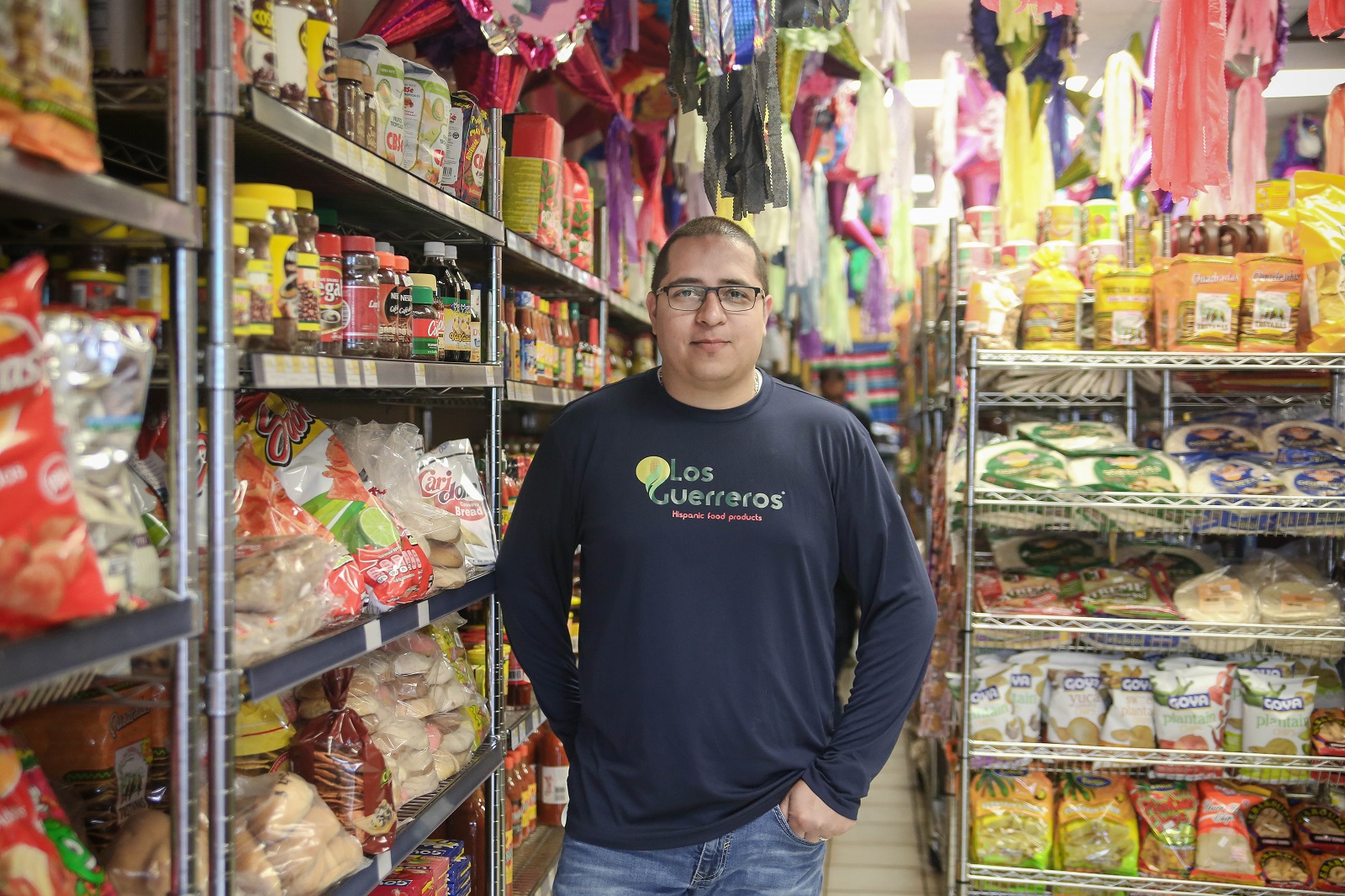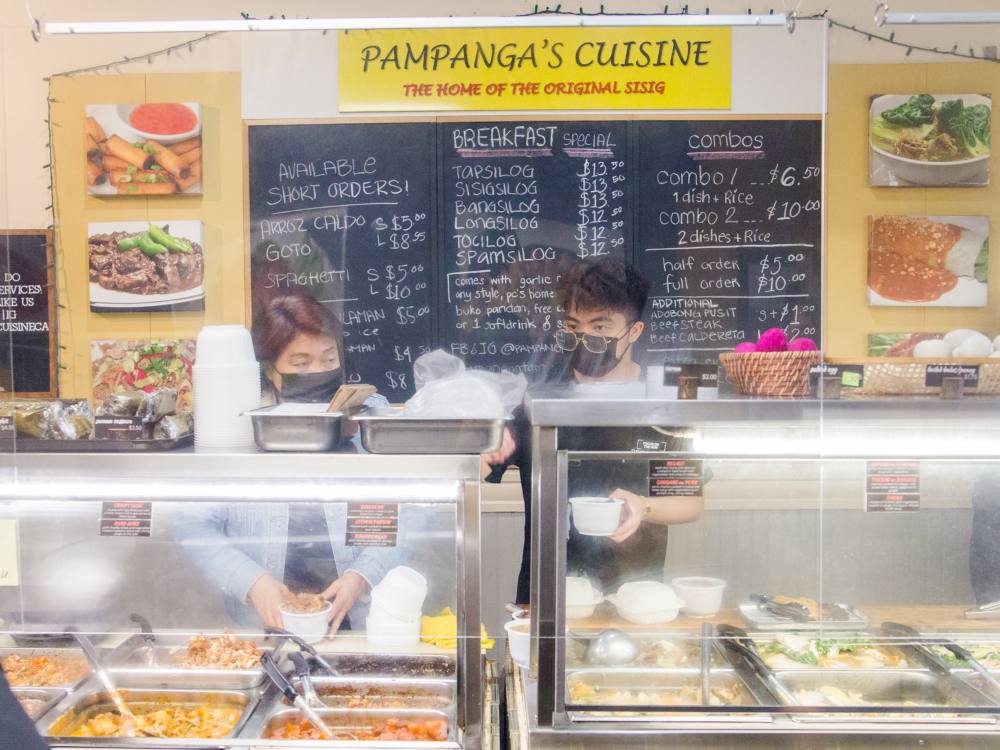They might not make the top 10 lists of where to go in Vancouver, but mom-and-pop shops are the glue that holds many ethnocultural communities together. And it’s well-known that rent spikes and redevelopment in the city threaten their livelihoods.
In Chinatown, senior residents who depend on the neighbourhood’s vanishing greengrocers, meat shops and dry goods suppliers are saying their home is being gentrified from Chinatown into “Coffeetown."
To the east, there’s a cluster of Filipino businesses on Joyce Street. Workers come here to wire money overseas to relatives. Customers come from as far as Nelson to pick up pantry staples. The restaurants serve the church with the Tagalog congregation down the street, as well as the essential workers who hop off the SkyTrain to pick up comforting takeout to microwave in breakroom kitchens. A tower in the works will be booting these crucial businesses from this transit hub.
There are stories of displacement like this all over the city, whether it’s a single but important business in an amenity desert or the slow erosion of a cluster of cultural businesses like in Punjabi Market.
On March 30, in a rare act of solidarity, city councillors voted unanimously for the municipality to investigate what it can do to prevent these losses.
‘A sense of reciprocity’
Coun. Christine Boyle of the OneCity party crafted the motion — titled “Placekeeping” — with help from advocates across the city concerned about key businesses vanishing from neighbourhoods. Something like it is long overdue, she said.
Boyle credited some of The Tyee’s reporting for informing the motion. In recent years, we have reported on how the Joyce Street Filipino hub serves pandemic frontliners, how a Latino market serves foreign workers and how grocers of all cultures source and curate their shelves based on what their immigrant customers miss.


“These spaces provide connection, identity, community and belonging for so many,” said Boyle, whose motion stresses that they are more than just private businesses out to make a buck.
The motion describes them as “cultural food assets” for many reasons.
They allow Canadian-borns and newcomers alike to access cultural goods and services. They are keenly aware of keeping prices within their customers’ budgets, whether they are seniors or blue-collar workers.
They are welcoming spaces where customers can speak their first languages and be free from the discrimination they might encounter elsewhere for being different. They give jobs to locals who might not be hired elsewhere because they are still learning English. They help make connections, whether it’s word of mouth or bulletin boards with leads for newcomers on housing, tutoring and employment.
They are incredibly grounded within their communities, from sourcing locally to allowing regulars strapped for cash to pay next time, or freebies like an upsized portion or a bowl of rice. They also respond to the specific needs of people who walk through their doors every day — Pampanga’s on Joyce Street knows many of their customers will be taking food to work, so they ensure they use microwavable takeout containers.
“These mom-and-pops know the lived experience of people who use their services and purchase their goods,” said Christina Lee of Hua Foundation, a non-profit that consulted on the motion. “That kind of intuition makes these businesses so important to the community. There’s a sense of reciprocity that makes the community work.”
And for curious visitors who aren’t from the communities to which these businesses cater, the shops offer a venue to encounter another culture and see the people they share their city with. In some cases, these businesses might even create tourism potential.
Cultural businesses are everywhere in the city
Hua Foundation has been keeping tabs on the loss of cultural food asset businesses for years. One of their reports on Chinatown found that the neighbourhood lost a third of its dry goods stores and more than half of its fresh food businesses, from grocers to restaurants, between 2009 and 2016. Residents of the nearby Downtown Eastside also depended on these affordable businesses.
While the motion mentions places like Chinatown and Punjabi Market due to their historical importance and mainstream recognition, Lee hopes residents and policy-makers won’t forget that there are cultural businesses in every corner of the city.
“We know that for an ethnic or cultural group, life doesn’t just happen in one neighbourhood,” she said.
Just because a business might be located in an area without celebrated neighbourhood cachet “doesn’t make them any less worthy of support” when rent and redevelopment pressures come, said Lee.
However, there are more of these cultural businesses that cater to working-class immigrants on the east and south sides of the city — on streets such as Hastings, Fraser, Victoria and Kingsway — because that’s where commercial real estate has been historically cheaper to rent. But in recent years, even these places are heating up as developers and trendy entrepreneurs with deeper pockets than immigrant mom-and-pops are coming in to set up shop.
While some mom-and-pops are able to rent out the commercial units of new developments, these buildings tend to have large units that can only be afforded by the likes of banks, medical offices and drug store chains.
Lee also hopes that the Placekeeping motion will create better communication between city hall and small business owners.
“Even for those who speak English fluently, there are enough compounding barriers,” she said. “Some of these people work 70 hours a week and don’t have time to make it down to the office to file paperwork.”
Aside from ethnocultural businesses, Vancouverites who spoke to the motion mentioned businesses with other important meanings that are under threat. There’s the gentrification of Davie Street, which first developed as a prominent queer community in the 1970s. There’s also the gentrification of areas home to resources for low-income people such as the Downtown Eastside and Mount Pleasant, where a small recycling depot that locals depended on was turfed in favour of condos and artist spaces.
What does the Placekeeping motion have in terms of solutions?
There are a few suggestions of how to protect independent ethnocultural businesses in Boyle's motion to city council. They can be protected as heritage assets; using cultural zones or land trusts; and during the redevelopment process, perhaps through a right-to-return policy. City staff will be coming up with more.
On the larger issue of land use, Coun. Boyle wants Vancouver to stop channelling density on the busy arterials where these businesses are located. Even when there’s no redevelopment at all, the redevelopment potential of that land massively increases speculative land value and results in rent increases, she said.
“We need to spread all of that out and take pressure off of these businesses,” she told The Tyee.
That future might be coming. The planning department just released the draft of the city-wide plan to 2050, which calls for spreading housing, businesses and cultural spaces more evenly across Vancouver.
For many of the neighbourhoods that have already upscaled and lost these important small business assets, that change can’t come soon enough. ![]()
Read more: Food, Municipal Politics, Urban Planning
















Tyee Commenting Guidelines
Comments that violate guidelines risk being deleted, and violations may result in a temporary or permanent user ban. Maintain the spirit of good conversation to stay in the discussion and be patient with moderators. Comments are reviewed regularly but not in real time.
Do:
Do not: